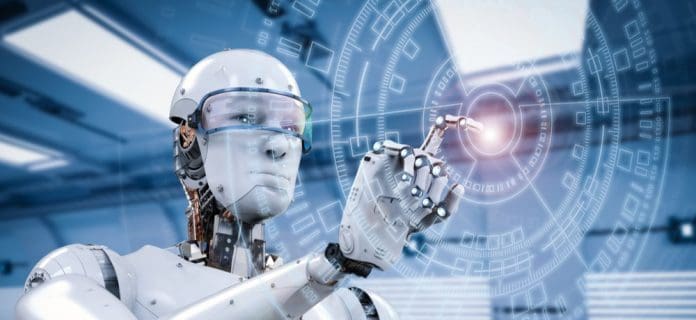Technology continues to thrive in the current world, with robotic automation gaining ground in all areas of our lives. Robots are found in various tasks in homes, industries, factories, schools, and hospitals. While others are getting concerned with the widespread use of robots, it is evident that robots offer numerous benefits to everyone, which include the following.
Benefits of Robots in Everyday Lives
Robotic automation plays a crucial role in our everyday lives. The following comprise the various benefits robots bring into our daily lives.
1.Time-saving
Industrial or business tasks are tedious and time-consuming. If human workers handle the company’s repetitive tasks, other jobs within the business suffer as the repetitive tasks take too much time for the understaffed labor force. The robots save time by taking up tedious, repetitive, and life-threatening tasks and freeing human workers to focus on other business areas. Also, the robots operate at high speeds enabling faster accomplishment of tasks.
2. Safety
Most industrial processes are tedious, repetitive, and dangerous, which exposes human workers to harm. Robots are designed to carry out repetitive and boring jobs and can perform effectively in hazardous environments, such as the inside of a nuclear plant and underwater. Robots work alongside humans and have become great assistants.
3. Ease of access
There are several things we would not be able to accomplish on our own and they are now possible thanks to the robots. Robots enable the accomplishment of humanly impossible tasks. For instance, shifting weighty objects from one place to another. Some people do not have or lose walking abilities in life, and robots make their ability to move from one point to another possible.
4.Surveillance
Some regions are inaccessible to humans because they are hazardous or merely unreachable to humans. Robots play a significant role in facilitating the surveillance of those regions. The robots can be fitted with cameras to provide excellent coverage of unreachable areas. For instance, bomb robots are used to gather intel on a dangerous place before human experts can enter.
5.Minimize loneliness
Artificial intelligence robots can provide companionship to individuals who are alone. They provide company and can interact with people who are isolated, thus lessening loneliness. Through their companionship, the robots diminish the likelihood of people developing depression. Hence, robots make life meaningful and fulfilling for anyone.
6.Enhanced productivity
The robots operate at high speeds and can produce on a large scale than human workers can. Moreover, robots can work 24/7 non-stop, implying increased productivity. Hence, if a company is dealing with a fast-moving good whose demand is high, the robots become efficient in ensuring a company can meet the high market demands. Also, with increased productivity, a business can comfortably take up large and urgent order because the robots enable its accomplishment.
Robots do not get tired, sick, or vacation, implying continuous high production. Robots take up hazardous tasks such as car assembly and free human workers to focus on the safe jobs they can effectively perform. That guarantees an increase in productivity as the robots produce, on the other hand, and workers produce from another angle.
7.Minimize human errors
The robots are accurate and precise. They operate using software. The business programs the robot’s software by entering the required product specifications, and the robots produce products precisely as programmed.
Human workers get tired or forget the specifications of a product, contributing to significant errors. With these errors, a business is forced to reproduce a product or sell the product at a low price, making the company incur huge losses. Robots do not tire nor forget, thus minimizing the chances of errors.
Examples of Robots in Daily Lives
Various types of robots exist and are as follows.
1.Collaborative robots
Collaborative robots, as the name suggests, are robots designed to work alongside humans. These robots can operate under the control of a human worker. Unlike autonomous robots, collaborative robots are safer and can be utilized in factories and other workplaces with humans present. They are also called robotic staff augmentation, making it possible for human workers to perform complicated operations without exposing themselves to danger, like autonomous robots.
Collaborative robots are mainly found in industries, warehouses, factories, households, airports, and shopping centers. They enhance workplace productivity while replacing workstation accidents. A classic example of a collaborative robot is the Baxter robot, which is lightweight and movable within the place of work.
2.Medical robots
The medical robots are designed for use in the healthcare settings such as hospitals, ambulances, and doctor’s surgeries. The medical robots can be autonomous, while others assist doctors or surgeons in medical operations.
Medical robots are intent on easing, hastening medical procedures and ensuring that they are accurate. They are utilized in various surgical processes, such as tumor removal, endoscopic procedures, and needle biopsies. Moreover, medical robots can carry out various repetitive and complex tests. One classic example of a medical robot is the da Vinci Surgical System.
3.Domestic robots
Domestic robots are designed to aid with household tasks, hence personal service robots. They are sometimes called companion robots; aside from homes, they can be found in the workplace. Domestic robots execute tasks, including doing laundry, cleaning, and caring for the elderly and disabled.
Examples of domestic robots are Roomba and Wakamaru robots. The Roomba robot is utilized in homes to clean rugs, carpets, and floors. On the other hand, the Wakamaru robot is designed to offer companionship to the elderly. The increasing demand for companionship for the elderly has led to the increased manufacture of domestic robots.
4.Industrial robots
Industrial robots can be found in manufacturing industries for processes requiring excellent speeds, endurance, and accuracy. They are mainly situated in the assembly lines and tackle loading and welding jobs. Industrial robots are superior to human workers because of their high precision levels. They are computer controlled and equipped with several sensors to sense the completion of tasks.
5.Educational robots
Educational robots are designed for an educational or school setting, enabling teachers to teach and students to research their areas of interest without getting injured. The educational robots are smaller than the industrial robots and are fitted with multiple safety features to ensure children’s safety.
6. Entertainment robots
These robots are designed to entertain audiences. They include clowns, animatronic toys, plus automated creatures appearing in science fiction films. The entertainment robots are intended for adults to unwind and keep kids entertained.
Conclusion
Given the various types of robots in our daily lives, robots play significant roles, as illustrated through their benefits. The robots save time, enhance workers’ safety, enhance productivity, minimize loneliness, minimize human errors, and facilitate surveillance of humanly unreachable areas.






